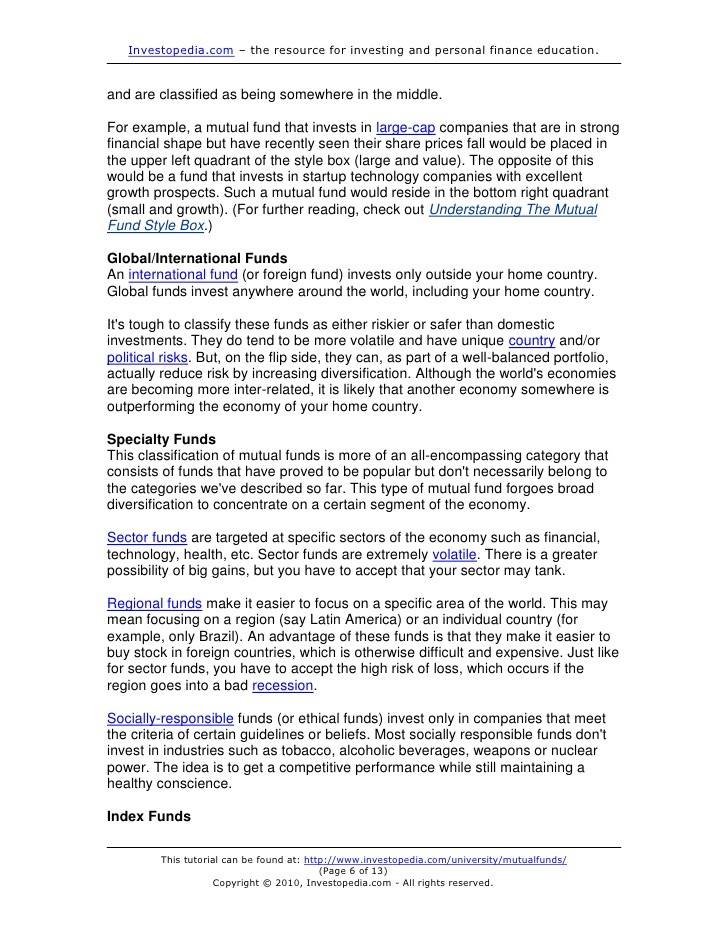The Lowdown on Mutual Fund Sales Loads
Post on: 17 Август, 2015 No Comment

By the Financial Industry Regulatory Authority | More Articles
Investors put more money into U.S. stock mutual funds in 2013 than they took out. They haven’t done that during a calendar year since 2005. If you want your mutual fund investment to work for you, it pays to know about fund sales charges, also called loads.
When you buy mutual fund shares from a stockbroker or other investment professional, you’ll likely pay a sales charge or load, which amounts to a percentage of the money you invest. Like commissions when buying stocks or bonds, mutual fund loads compensate the broker for the time and effort to help you select an appropriate fund.
How sales loads work
The amount of a sales load, how it is calculated, and when you are charged can vary from one mutual fund to another. It also may depend on the class of fund shares you buy. Many mutual funds offer more than one class of shares. Although each one represents a similar interest in a fund’s portfolio of investments, the fund will charge different sales loads and fees based on the class. It pays to understand the financial consequences of the loads charged by each class before you invest. Even small differences in sales charges and fees can make a big difference in how much money you can make. Here is how the loads work:
- Front-end loads. This is the commission you usually pay when buying Class A shares. It is deducted from the purchase price. For example, if you invest $1,000 in a fund with a 5% front-end load, $950 goes toward the purchase of the fund’s shares and $50 goes to your broker.
- Back-end loads. You pay this amount when selling Class B shares before a certain holding period has expired. The holding period is often seven years but can be longer or shorter depending on the mutual fund. After the period expires, you are not charged for selling your shares. And a back-end load tends to shrink each year, as much as a full percentage point, until it eventually disappears. Back-end loads also are called contingent deferred sales charges. You also pay asset-based sales charges when you purchase B shares that come out of the mutual fund’s assets to pay for such things as broker compensation and advertising.
- Level loads. Class C shares may charge a level load, which is an amount collected annually from your fund balance. Note, however, that some Class C shares may impose a back-end load similar to Class B shares.
- No-load funds. As the name implies, these funds do not have sales loads. You can buy no-load funds directly from the investment company that manages the funds. The same funds might be available from investment professionals, but you’ll likely pay a sales load if you buy from them. Though no-load funds don’t have sales charges, they may charge other fees, including purchase, redemption, and exchange fees, in addition to the operating fees all mutual funds charge.

Breakpoint discounts
Just as with groceries, if you buy mutual fund shares in bulk, you often get a discount. Some front-end load funds offer volume discounts. The amount of the discount goes up as the size of your investment increases. The points at which discounts become available are called breakpoints .
Breakpoints can differ with every fund. They usually start at investment levels of $50,000, but they sometimes begin at $25,000. For example, a fund might charge a front-end load of 5% for an investment under $25,000 but offer a discounted load of 4.25% for an investment between $25,000 and $50,000.
Some funds offer breakpoints if all of your fund investments within the same mutual fund family add up to a breakpoint level. You also might qualify for a breakpoint if you make a commitment to regularly purchase a fund’s shares that eventually reach the breakpoint level. Your broker is required to inform you of breakpoint thresholds and apply them if your investment qualifies. But it’s a good idea to take the initiative and ask if, and when, breakpoints apply to any funds you might consider purchasing.
Use FINRA’s Fund Analyzer to compare mutual fund sales loads, fees, and other expenses that can affect your return.
FINRA is the largest independent regulator for all securities firms doing business in the United States. Our chief role is to protect investors by maintaining the fairness of the U.S. capital markets. FINRA does not endorse, sponsor, or guarantee, nor is it sponsored by, any advertisers on this site, and any dealings with those advertisers are solely between you and the advertisers.
Try any of our Foolish newsletter services free for 30 days. We Fools don’t all hold the same opinions, but we all believe that considering a diverse range of insights makes us better investors. The Motley Fool has a disclosure policy .














